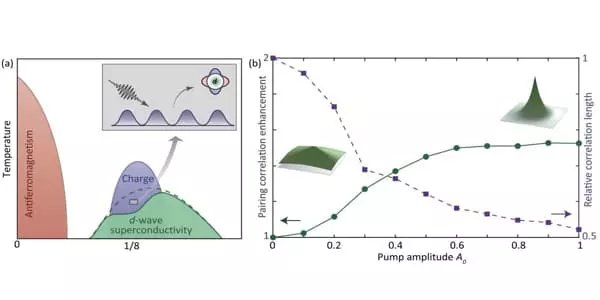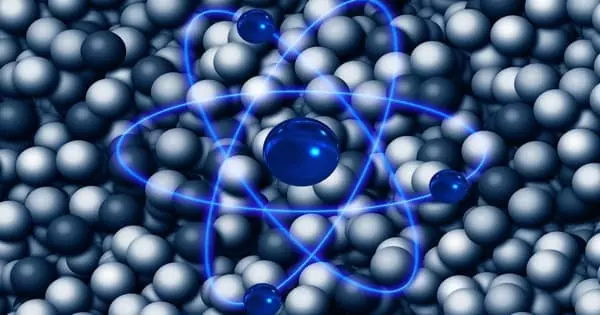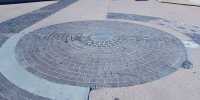The Frontera supercomputer was used by researchers to investigate light-induced superconductivity using a pulsed laser, which is thought to be a promising route to room-temperature superconductors. They discovered that a pulsed laser can enhance d-wave superconductivity, but the light-enhanced superconductivity may be fluctuating. The project made use of a recently developed exact diagonalization method, which allows for precise calculations of up to a trillion matrix elements but necessitates large-scale high-performance computing.
Equilibrium may be difficult to achieve in our daily lives, but it is the natural state. Equilibrium is a bit boring in chemistry and physics, according to Cheng-Chien Chen, assistant professor of physics at the University of Alabama at Birmingham. His research aims to engineer new states of matter and control these states by probing the non-equilibrium possibilities.
“One of our main goals is to see if we can stabilize new phases that are absent in equilibrium but can become dominant at non-equilibrium when we drive the electron system to non-equilibrium,” Chen said. “This is one of the non-equilibrium studies’ holy grails.”
Chen has recently been studying the effects of pump-probe spectroscopy, which uses ultrashort laser pulses to excite (pump) the electrons in a sample, resulting in a non-equilibrium state, while a weaker beam (probe) monitors the pump-induced changes.
One of our main goals is to see if we can stabilize new phases that are absent in equilibrium but can become dominant at non-equilibrium when we drive the electron system to non-equilibrium. This is one of the non-equilibrium studies’ holy grails.
Cheng-Chien Chen
Chen’s theoretical work suggests that using this method, superconductivity can be generated at higher temperatures than previously possible, paving the way for revolutionary new electronics and energy devices.
Chen and collaborator Yao Wang from Clemson University demonstrated in Physical Review Letters in 2018 that it was possible to generate d-wave superconductivity and make it the dominant phase using pump-probe systems.
In a subsequent paper published in Physical Review X in November 2021, Chen and Wang demonstrated that while the d-wave pairing strength can be increased in some cases, the resulting electron Cooper pairs become localized rather than long-range correlated. As a result, light-induced superconductivity may be fluctuating.
Chen simulates the quantum behavior of electrons in non-equilibrium systems using supercomputers. His most recent work makes use of Frontera, the fastest supercomputer at any university and the world’s 13th fastest. Chen is a Frontera Leadership Resource Allocation awardee at the moment.

Simulating quantum systems usually necessitates some level of approximation. However, in order to reveal the spatial fluctuation of a light-induced state, Chen and Wang devised a new method that accurately treats electron interaction effects and electron-lattice coupling with high numerical precision. They believe that this precision makes a significant difference when it comes to characterizing strongly correlated systems.
“In quantum materials, such as transition metal compounds, the interaction between electrons is so strong that we can no longer treat electrons as independent particles,” he explained. He explains this type of system using the analogy of a moving vehicle. On an empty highway, one can drive however they want, without regard for other vehicles. During a traffic jam, however, the movement of one car affects all of the others. Electrons in highly correlated systems are trapped in a massive traffic jam, giving them distinct and potentially controllable properties.
Chen computes the behavior of individual electrons using a method known as large-scale matrix diagonalization, which is a fundamental linear algebra operation with numerous applications in scientific computing that also happens to be computationally intensive. The matrices he creates to track electrons are massive 34 billion times 34 billion, or over 1 trillion elements and can only be studied on a computer the size of Frontera, which uses tens of thousands of processors in parallel.
“It’s a true quantum many-body simulation, with no approximation in dealing with interactions,” he said. The first step is to identify potential new phases of matter, which include exotic states such as s-waves, d-waves, and p-waves. The following step is to create and control these phases.
“By controlling the frequency and amplitude of the laser, we can suppress some phases, induce new ones, and selectively control the phase of matter with the laser pump,” he explained.
Although superconductivity may appear to be science fiction, it is already a critical component of quantum computers such as IBM Q, maglev trains, and MRI machines. However, superconductivity applications are not widely used.
“Materials must be kept at extremely cold temperatures to exhibit superconductivity, which requires a lot of energy,” Chen explained. “Finding a way to stabilize superconductors, even in a short-lived state, will open up a plethora of new applications.”
Chen explained that Frontera allows him to simulate what would happen at extremely short timescales for non-equilibrium systems. “This will assist us in understanding and, eventually, controlling various novel phases for next-generation technologies.”















